由于大量的接触fortran77,先学习fortran77吧
- 1.fortran不区分大小写,fortran77一般全部大写,感觉没必要,不好读,还是用大小写混合着写吧。后缀 .for 为固定格式的代码,比如fortran77的代码语法就是。另一种以 .f90 为后缀,是自由格式。
Program ex1
print *,'Hello world!'
end
- 最好在程序开头写上implicit none语句,作用是不按照默认的数据类型。要是默认的则I和N之间所有字母开头的变量都代表这个变量是整数类型。
1 Program ex1 2 implicit none 3 real x,y,z,aver 4 x=90.5 5 y=87.0 6 z=60.5 7 aver=(x+y+z)/3 8 print *,'the three number are:',x,y,z 9 print *,'average=',aver 10 end
但是注意所有变量要在所有执行语句之前声明。
- 调用子函数:
在子函数中声明与子函数同名的变量,记得要返回的值赋值给这个与子函数同名的变量。
1 c Main program,to calculate the area of the circle 2 Program ex2 3 implicit none 4 real x,y,z,areaofcircle 5 x=90.5 6 y=87.0 7 z=60.5 8 print *,'r=',x,'area of circle=',areaofcircle(x) 9 print *,'r=',y,'area of circle=',areaofcircle(y) 10 print *,'r=',z,'area of circle=',areaofcircle(z) 11 end 12 13 function areaofcircle(r) 14 implicit none 15 real r ,areaofcircle 16 areaofcircle=3.1415926*r**2 17 return 18 end
从上面可以看出,子函数更像数学里一个公式,其实areaofcircle可以用一个更简单的f代替,就更好理解啦。
- 子例行函数
1 c Main program,to calculate the area of the circle 2 Program ex2 3 implicit none 4 real x,y,z,xarea,yarea,zarea 5 x=90.5 6 y=87.0 7 z=60.5 8 c 必须有call 9 call areaofcircle(x,xarea) 10 call areaofcircle(y,yarea) 11 call areaofcircle(z,zarea) 12 print *,'r=',x,'area of circle=',xarea 13 print *,'r=',y,'area of circle=',yarea 14 print *,'r=',z,'area of circle=',zarea 15 end 16 c 通过传址方式回传数值,利用了area的地址 17 subroutine areaofcircle(r,area) 18 implicit none 19 c 含有implicit none语句,那么本子程序所有变量都要显示声明 20 real r,area 21 area=3.1415926*r**2 22 end
2. 算法
- if:
1 program readGrade 2 implicit none 3 integer num,grade,i,j 4 i=3 5 j=1 6 print *,"请输入",i,"个人的学号和成绩:" 7 10 read *,num,grade 8 if(grade .GT. 80) then 9 print *,num,grade 10 end if 11 j=j+1 12 if (j .LE. i) goto 10 13 end
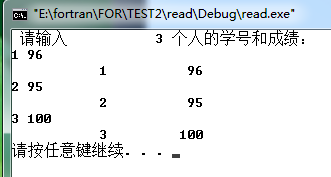
尽量不要用goto这种跳转,多了逻辑会很乱。可以用do 代替。
由于visual studio 2013安装的inter 的fortran编译器兼容性比较好,在.for中写fortran90的语法也不报错,所以,大于号也可以直接写 >,比如: if(grade > 80) then
判断是否是闰年:
1 C 判断是否是闰年,这种c开头的注释是fortran77语法 2 Program isYear 3 implicit none 4 integer year!year是整数类型; 以 ! 开头的语句或!之后的部分是fortran90语法的注释 5 !下面是执行语句 6 year=0 7 !下面是默认的读入方式 8 print *,'请输入年份,为整数:' 9 read *,year 10 if ( MOD(year,4) .EQ. 0) then 11 if (MOD(year,100) .NE. 0) then 12 print *,year,'年是闰年,1' 13 else 14 print *,year,'年不是闰年,1' 15 endif 16 else 17 if (MOD(year,400) .EQ. 0) then 18 print *,year,"年是闰年,2" 19 else 20 print *,year,'年不是闰年,2' 21 endif 22 endif 23 24 end
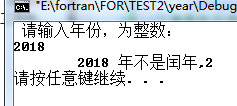
- 计算1-1/2+1/3-...-1/100:
1 program computeSum 2 implicit none 3 real sum 4 integer i 5 sum=0.0 6 do 10 i=1, 100 7 if (mod(i,2) .EQ. 0) then 8 sum=sum-1.0/i 9 else 10 sum=sum+1.0/i 11 10 end if 12 print *,sum 13 14 end

1 program computeSum 2 implicit none 3 real sum 4 integer i 5 sum=0.0 6 do 10, i=1, 100,1!10后面的逗号要不要都行 7 if (mod(i,2) .EQ. 0) then 8 sum=sum-1.0/i 9 else 10 sum=sum+1.0/i 11 10 end if!fortran77中不让这样,但也可以执行,兼容了 12 print *,sum 13 sum=0 14 do 20, i=1, 100,1!10后面的逗号要不要都行 15 if (mod(i,2) .EQ. 0) then 16 sum=sum-1.0/i 17 else 18 sum=sum+1.0/i 19 end if 20 20 continue!最好这样 21 print *,sum 22 23 end

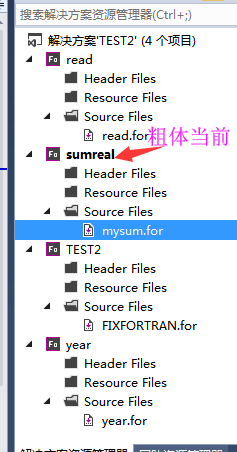
--------------
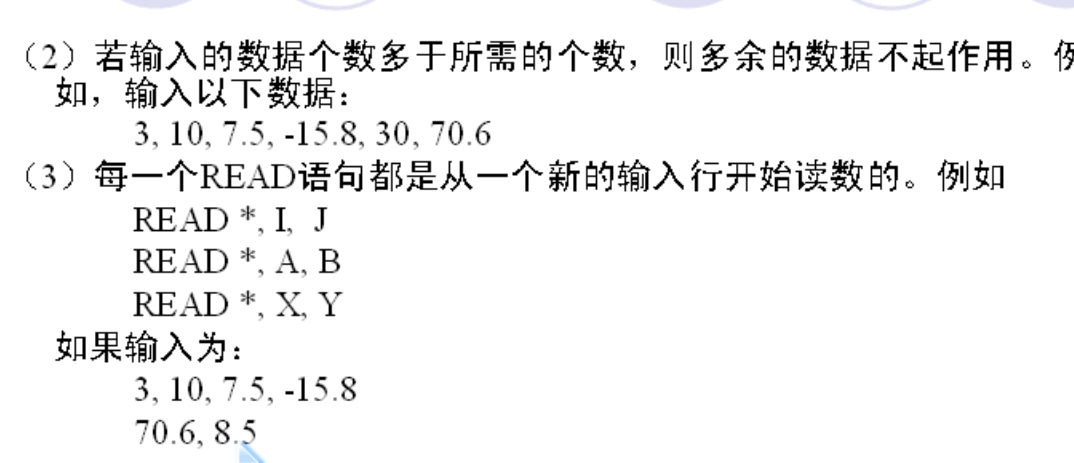
1 program mymath 2 !double 比 real 精度要高 3 double precision a,b!fortran77语法 4 a=11111.1 5 b=1111.11 6 print *,a*b 7 print *,sin(1.0) 8 print *,asin(1.0) 9 print *,log(3.0) 10 print *,int(8.6) 11 print *,mod(8,3) 12 print *,sign(8.5,-2.0)!将后一个数的符号给前一个数 13 print *,max(1.0,3.0,9.0,11.0,22.0,100.0)!求一系列数的最大值,但类型必须相同,都是实数 14 print *,max(1,2**10,9,11,22,100)!类型必须相同,都是实数,2**10代表2的10次方 15 print *,min(1,3,9,11,22,100) 16 !real 只能表示7位数 17 print *,0.001+123456.0-123455.0 18 print *,123456.0-123455.0+0.001 19 print *,1.0/3.0*3.0 20 print *,1,2 21 print *,sqrt(4.0),sqrt(9.0)!必须为实型数据 22 print *,sqrt(a),sqrt(b) 23 write(*,*) '123456789012345678901234567890'!整数占11列,两个整数占23列,说明中间有个空格 24 25 end

--------------------------
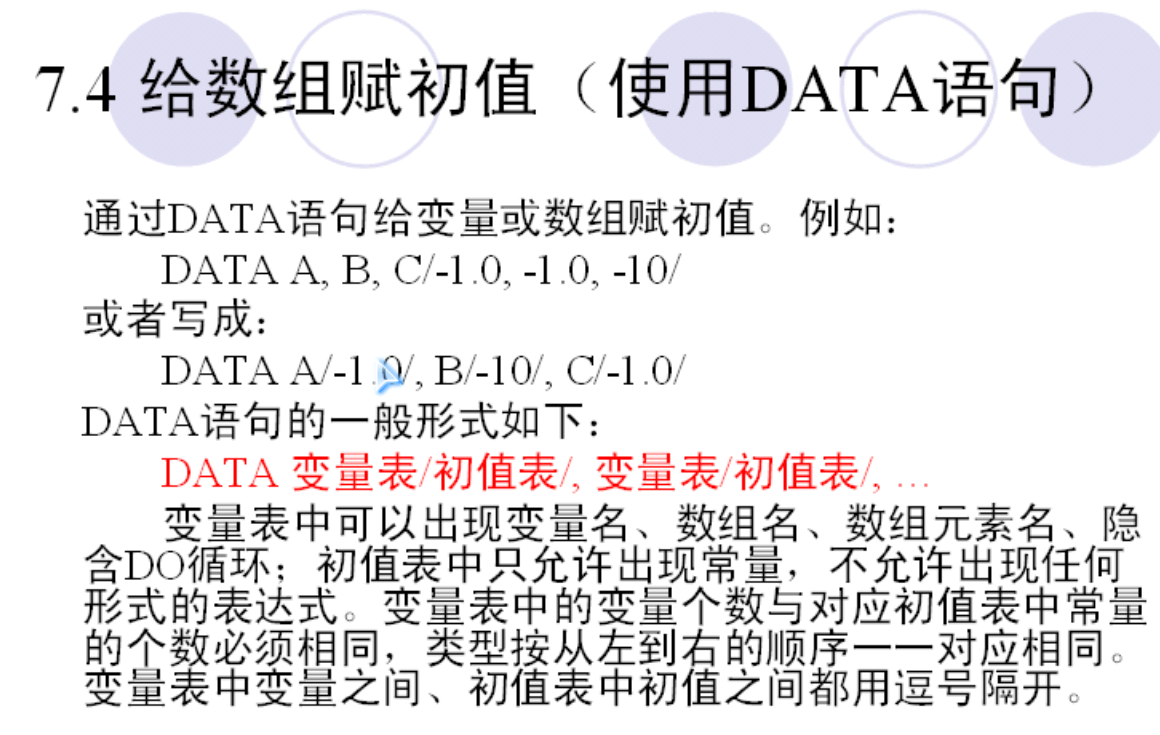

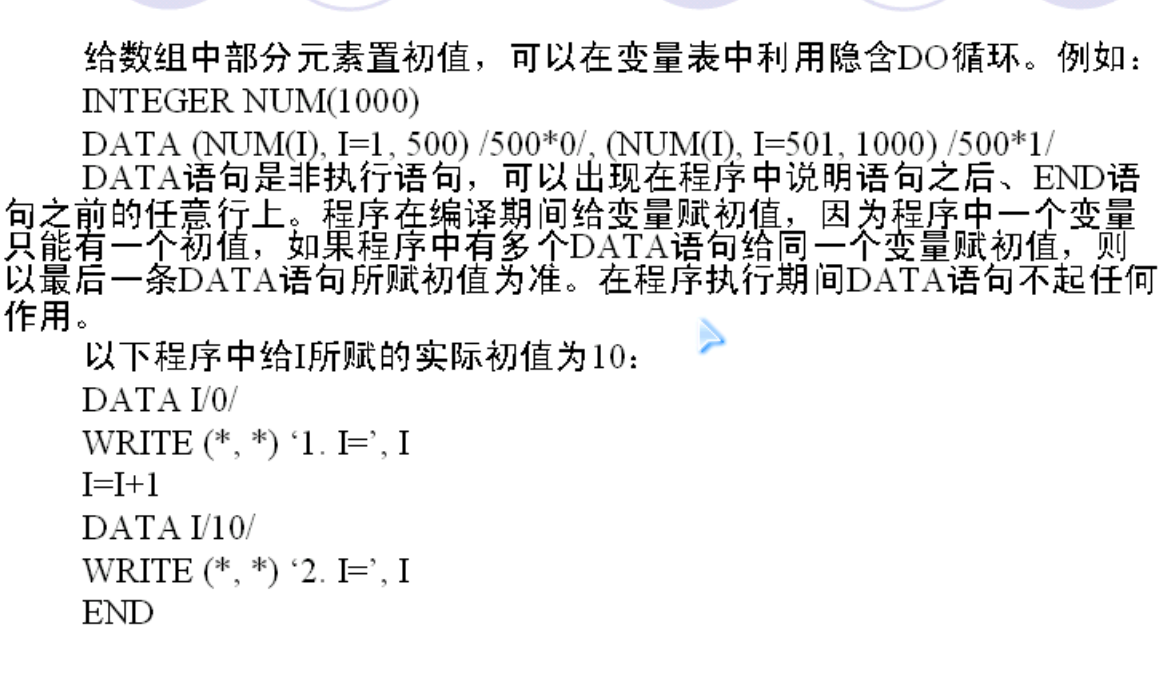
1 program arrayStudy 2 double precision a(1:100000000)!一维数组,包含10个整形数组 3 double precision b(1:3,4:6)!二维数组,3行3列 4 !dimension b(1:3,4:6)!和上面声明效果一样,不过是多写了一行 5 !double precision b 6 DATA C,D,E,F/-1.0,2.0,3.0,4.0/ 7 DATA G/2.0/,H/3.0/ 8 9 integer i 10 do 10 ,i=1,100000000 11 a(i)=i**2 12 !print *,a(i) 13 10 continue 14 print *,a(100000000) 15 end

1 Program ex1 2 print *,'Hello world!' 3 end
